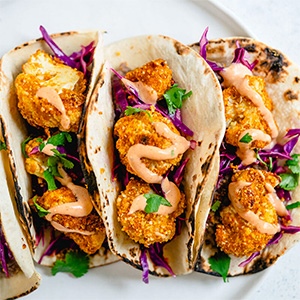How to eat green iguanas and other invasive species
Published in Variety Menu
If you ever happen to come across a green iguana, don’t be frightened. Don’t run away.
Just kill it, cook it and eat it.
You can pan fry it, deep fry it or roast it. You can even boil it, though boiled green iguana doesn’t sound particularly appetizing, for some reason. Green iguanas are white meat and are said to taste like chicken, of course.
The flavor is also said to resemble pork or grouper, which tastes almost nothing like chicken. The texture is similar to rabbit, but they can grow to be 5 feet long, with spikes down the back and tail. That’s why you might be tempted to scream or run away.
Best of all, if you eat it you will be helping the ecosystem. Green iguanas are native to Central America and northern South America, plus some islands in the Caribbean. In the United States — they are most often found in Florida, Texas and Hawaii — they are considered an invasive species.
This information comes from a new book, “Love Them to Death: Turning Invasive Plants into Local Economic Opportunities,” edited by Wendy L. Applequist of the Missouri Botanical Garden and published by the Missouri Botanical Garden Press.
The book is generally academic in nature, with chapters devoted to Japanese knotwood management, weaving baskets from invasive vines and invasive plants used in Chinese medicine.
But I look at it more as a cookbook. The chapter that most caught my eye, written by Alana N. Seamann and Alexia Franzidis, both at the University of North Carolina at Wilmington, is a list of edible invasive species and describes ways of eating them.
Watercress, for instance, turns out to be an invasive species originally from the Andes Mountains in South America. It now grows all over the United States except — and this is my favorite fact in the entire book — in North Dakota.
It is known for its peppery flavor (it is a member of the nasturtium family; nasturtiums are also peppery) and can be used as a garnish or a cooked green. Though the book doesn’t mention it, it is also great on certain kinds of sandwiches, and I love it in a Thai-inspired shrimp with lemon over noodles dish.
It may be invasive, but you can buy watercress in grocery stores across the country. Maybe even in North Dakota.
If you have spent time in the southeastern United States, you are all too familiar with kudzu, an aggressive vine that covers and grows over pretty much any kind of tree or bush. It’s native to China, Japan and India, but trust me, it’s everywhere in the southeast.
Apparently, it is edible (which begs the question: Why aren’t people eating it? This topic is coincidentally covered in the book’s first chapter, “When Kudzu Ate the South, Why Didn’t the South Eat Kudzu?”).
The vine tips taste like snow peas, the flowers taste “fruity” and the leaves taste like spinach. The book suggests using tender young leaves in quiche.
You may already know that you can eat daylilies, those decorative flowers that originally came from Asia. The flowers are edible with what the book says is a sweet/spicy peppery flavor, and the buds are said to taste more like radish.
The stalks are edible, though they have a texture like lemongrass, and the tubers taste like a raw sweet potato, if you’ve ever tried that. I haven’t. The flowers can be stuffed with either sweet or savory fillings, but they apparently have a laxative effect on some people.
Don’t say you weren’t warned.
©2025 STLtoday.com. Distributed by Tribune Content Agency, LLC.










Comments